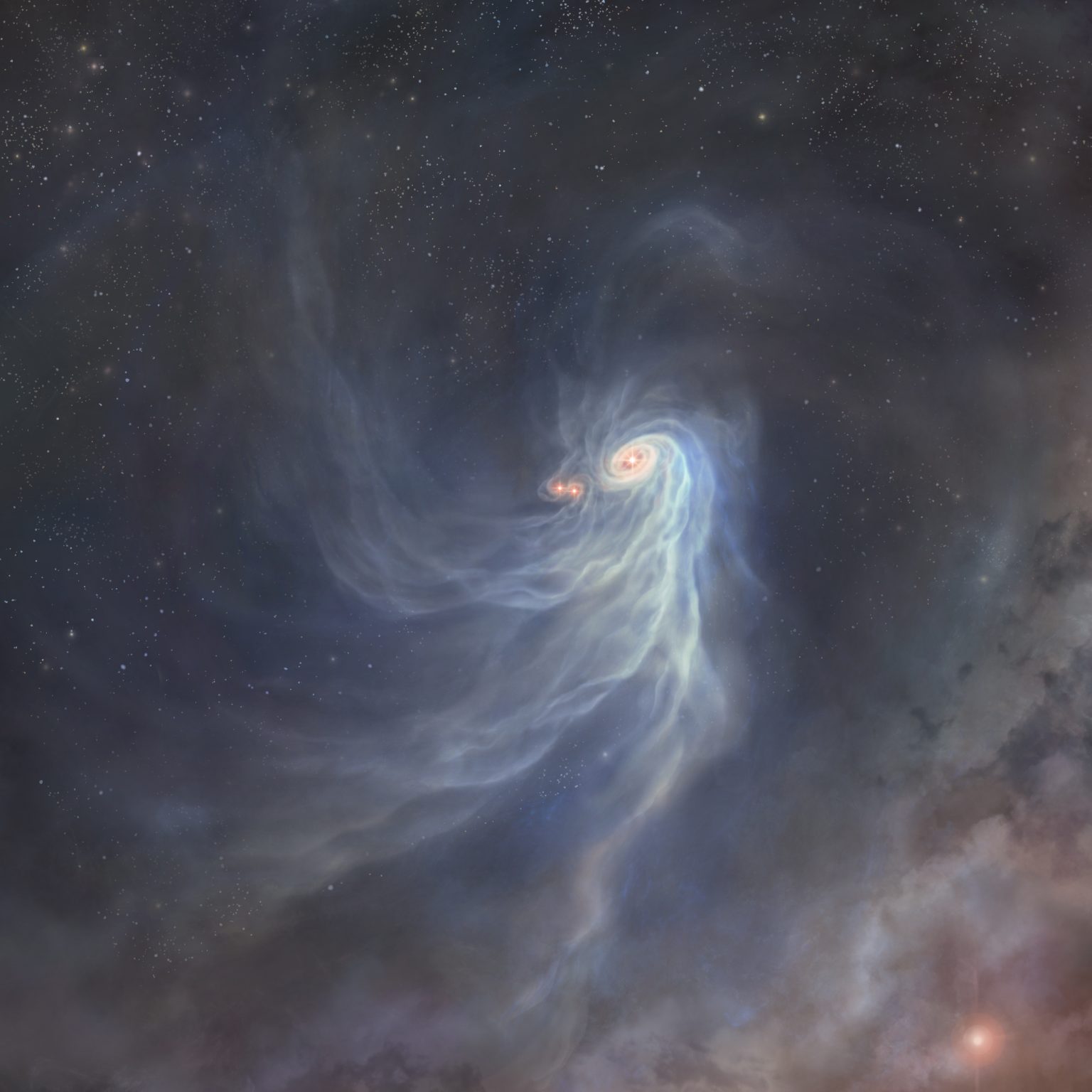Spiral Arms in Space Explain How Star Systems Form
Posted on Categories Discover Magazine

Unlike our solitary Sun, most stars form in binary or multiple-star systems. However, astrophysicists haven’t learned a lot about how these complex stellar systems are born because they lack high-resolution observations to distinguish between different theories of formation.
But international researchers have now gained some insight with the Atacama Large Millimeter/submillimeter Array (ALMA) in Northern Chile. Their study of IRAS 04239+2436, a triple system of protostars about 460 light-years from Earth surrounded by striking structures of gas called streamers, is reported in a recent study published in The Astrophysical Journal. The observations capture a critical moment in the formation process of a multiple star system.
“This is the first time that the origin of protostars and the streamers have been simultaneously and comprehensively clarified. The powerful synergy between ALMA’s observations and advanced simulations reveals the hidden mysteries of star formation,” said astrophysicist Tomoaki Matsumoto of Hosei University, a collaborator on the study, in a statement.
How Star Systems Form
When stars form, gravity pulls in gas that eventually coalesces in a process known as accretion, forming a disk and a growing protostar at its center. This process forms streams of infalling gas, called streamers, that act as conveyor belts, transporting material inward. Before, it was unclear how these streamers form.
With the ALMA radio telescope, the team studied IRAS 04239+2436 by observing radio waves from sulfur monoxide molecules, which glow when gas in the system is being violently shocked. Through observing these molecules, they discovered three spiral arms and were able to trace their outlines around the system’s three protostars. By analyzing the motion of the gas, they found that these arms were streamers, feeding the young stars the material they needed for growth.
“My first impression was that the structures were dancing together, spinning around the central protostellar system, although we later found that the spiral arms are channels of material feeding the baby stars,” said lead author Jeong-Eun Lee, an astrophysicist at Seoul National University.
These arms feed the triplet stars like a cosmic river flowing towards them, extending up to 400 astronomical units (AU; 1 astronomical unit is equal to the average Earth-Sun distance of 93 million miles).
Read More: Wandering Stars Pass Near Our Solar System Surprisingly Often
Triple Spiral Arms
To understand how these spiral streamers formed, the team turned to simulations on supercomputers ATERUI and ATERUI II programmed by Matsumoto. Using the simulations, Matsumoto and his team analyzed the gas’s motion and found that in the gas cloud where the protostars formed, the gas moving around the triplet stars creates shock waves. These waves take on the form of spiral arms.
“We found that the spiral arms exhibit gas flows toward the triple protostars; they are streamers supplying gas to the protostars,” said Matsumoto in a statement. “The velocity of the gas derived from the simulations and the observations matches well, indicating that the numerical simulation can indeed explain the origin of the streamers.”
(Credit:ALMA (ESO/NAOJ/NRAO), J.-E. Lee et al.)
Read More: What Happens When a Star Dies?
Protostar Formation Process
In some existing theories of multiple-star formation, protostars form either out of a turbulent gas cloud or result from an accretion disk fragmenting into multiple protostars. This work gives researchers a new, hybrid scenario that combines those hypotheses. In this scenario, seeds of protostars form as fragments of the disk, and the surrounding turbulent gas cloud sculpts the spiral arms and causes them to reach out widely.
The team also suggests that the study demonstrates why planet formation is difficult in multiple-star systems. When planets form, they are born out of the disks of gas and dust surrounding protostars in calm environments. The chaotic turbulence seen in multi-star systems — especially one as compact as this one — causes the protostars to strip each other’s disks. This leads researchers to suspect that IRAS 04239+2436 is not much of a planet nursery.
Read More: Scientists Find Accidental Evidence for a Controversial Theory of Planet Formation